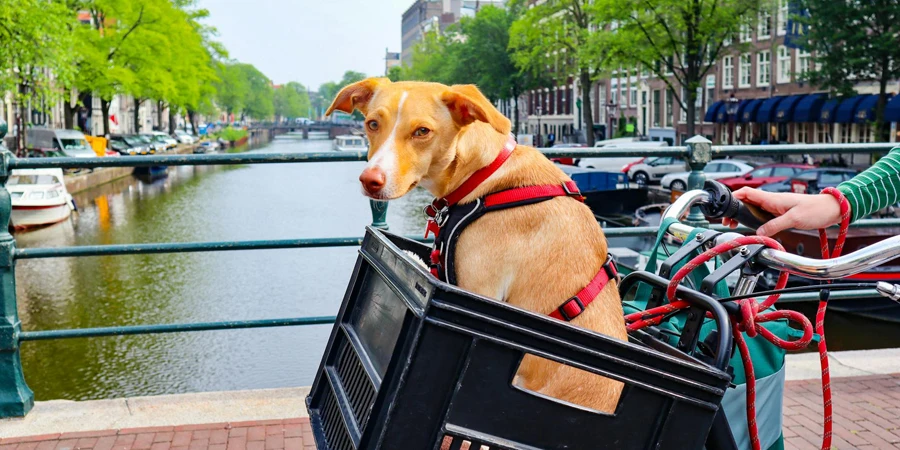Table of Contents
● Introduction
● Market overview
● Different types and their features
● Things to consider when selecting products
● Conclusion
Introduction
Pet carriers are essential for safe and convenient pet transportation, reflecting the rising trend of pet humanization and the growing pet ownership market. The pet carriers market is thriving, driven by increased pet ownership, urbanization, and advances in design and materials. Understanding the different types of carriers and their features is crucial for retailers to meet diverse customer needs. Key considerations, such as material, comfort, safety, and ease of use, ensure that pets travel securely and comfortably. This guide delves into the market dynamics and essential factors for selecting the suitable pet carriers for retail offerings.
Market overview

Market size and growth
The global pet carriers market was valued at USD 764.5 million in 2023 and is projected to grow at a compound annual growth rate (CAGR) of 6.5% from 2024 to 2030. This growth is driven by several factors, including the increase in pet ownership and urbanization, which has led to a higher demand for safe and convenient pet transportation solutions. Advances in product design and materials have also contributed to market expansion, offering pet owners innovative and comfortable carrier options. Additionally, regulatory influences, such as the guidelines set by the International Air Transport Association (IATA) and the Canadian Food Inspection Agency (CFIA), play a significant role in shaping the industry by ensuring that pet carriers meet safety and quality standards.
Regional insights
Regionally, North America holds the largest market share at 37.7%, due to the high number of pet owners and the strong emphasis on pet welfare and comfort. The Asia Pacific region is expected to experience the fastest growth, with a projected CAGR of 8.0% from 2024 to 2030. This rapid growth is attributed to the rising influence of Western culture, increasing pet adoption rates, and the growing middle class with disposable income to spend on pet care products. These regional dynamics highlight the varying demands and opportunities within the global pet carriers market, indicating a promising future for this industry.
Different types and their features

Soft-sided carriers
Soft-sided pet carriers are designed with lightweight, flexible materials such as nylon or polyester, making them easy to carry and store. They often feature mesh panels for ventilation, ensuring pets remain cool and comfortable. These carriers typically include padded interiors and removable, washable liners for added comfort and hygiene. Some models come with additional pockets for storing pet essentials, reinforced zippers for security, and adjustable shoulder straps for ease of transport.
Hard shell carriers
Hard shell carriers are constructed from durable plastics or composites, providing a secure and sturdy environment for pets. They often include metal doors with locking mechanisms to prevent accidental escapes and ventilation slits to maintain airflow. These carriers are designed to be easily cleaned, with smooth surfaces that resist odor absorption. Many hard shell carriers are IATA-approved for air travel, featuring hardware for secure attachment to seat belts and tie-down straps. Some models offer built-in feeding and watering dishes, as well as stackable designs for efficient storage.
Backpack carriers
Backpack carriers combine portability with comfort, designed for hands-free pet transport. They are typically made from lightweight, durable fabrics such as ripstop nylon and often feature padded shoulder straps and back panels for wearer comfort. These carriers include mesh windows for ventilation and visibility, ensuring pets stay calm during transport. Some backpack carriers are convertible, allowing them to be used as standard carriers or car seats. Additional features may include collapsible frames for easy storage, integrated safety leashes, and water-resistant materials to protect pets from the elements.
Other types
Cardboard carriers: Intended for short-term use, these carriers are lightweight and inexpensive. They are often used for initial transport from shelters or short trips to the vet. Despite their convenience, they lack durability and security features.
Crates: Typically made from heavy-duty materials such as steel or high-strength plastic, crates are designed for both at-home use and travel. Travel-specific crates include reinforced corners, non-slip bases, and secure locking mechanisms to ensure pet safety during transport.
Specialized carriers: These carriers incorporate advanced technology, offering features such as GPS tracking for real-time location monitoring, temperature control systems to maintain a comfortable environment, and built-in feeding mechanisms for long journeys. They are ideal for pet owners who require the highest level of safety and convenience for their pets.
Things to consider when selecting products

Material
Selecting the appropriate material for a pet carrier is critical for ensuring durability, comfort, and ease of maintenance. Common materials include plastic, metal, and fabric, each offering distinct advantages. Plastic carriers are lightweight, easy to clean, and provide robust protection, making them ideal for long-term use. Metal carriers, often used in crates, offer superior durability and security, especially for larger or more aggressive pets. Fabric carriers, typically made from materials like nylon or polyester, offer flexibility and ventilation but may require more frequent cleaning to maintain hygiene. When choosing a material, consider the pet’s specific needs and behaviors, as well as the intended use of the carrier.
Comfort
Ensuring comfort within the pet carrier is paramount to reduce stress and anxiety during travel. Features such as padded interiors and cushioned bottoms provide a soft and supportive environment for pets. Adequate ventilation is essential to maintain a comfortable temperature and prevent overheating. Carriers with mesh panels or ventilation slits allow for airflow while also enabling pets to see their surroundings, which can be reassuring. Additionally, removable and washable liners or bedding can enhance comfort and make it easier to keep the carrier clean and odor-free. Comfort-focused features are particularly important for longer journeys or for pets that may experience anxiety during travel.
Safety
Safety is a primary consideration when selecting a pet carrier, encompassing secure latches, sturdy construction, and vehicle compatibility. Good quality carriers should have robust locking mechanisms to prevent accidental escapes and ensure that pets remain secure during transit. The construction of the carrier should withstand impacts and resist damage, protecting pets from potential hazards. Compliance with regulatory standards, such as IATA guidelines for air travel, is essential to ensure the carrier meets safety and quality requirements. Carriers that can be securely attached to a vehicle’s seatbelt system provide an added layer of protection during car travel, minimizing the risk of injury in case of sudden stops or accidents.
Ease of use
The usability of a pet carrier is another crucial factor, particularly for pet owners who travel frequently. Features such as wheels, handles, and collapsible designs can significantly enhance portability and convenience. Carriers with wheels are beneficial for transporting larger pets or when navigating through airports and other large spaces. Handles and shoulder straps should be ergonomically designed to reduce strain on the user. Collapsible carriers offer the advantage of easy storage when not in use, saving space in homes and vehicles. Additionally, carriers with multiple entry points and accessible compartments for pet essentials can streamline the travel process, making it more efficient for pet owners to manage their pets during transit.
Conclusion

Selecting the right pet carriers involves understanding market trends, product features, and key considerations to ensure safety, comfort, and convenience for pets and their owners. Retailers can offer a range of carriers, including soft-sided, hard-shell, and specialized options, to cater to diverse customer needs. Emphasizing factors such as material durability, comfort features, safety standards, and ease of use helps in providing high-quality products that enhance the travel experience for pets. By staying informed about the latest advancements and regulatory requirements, businesses can effectively meet the growing demands of the pet carriers market.




